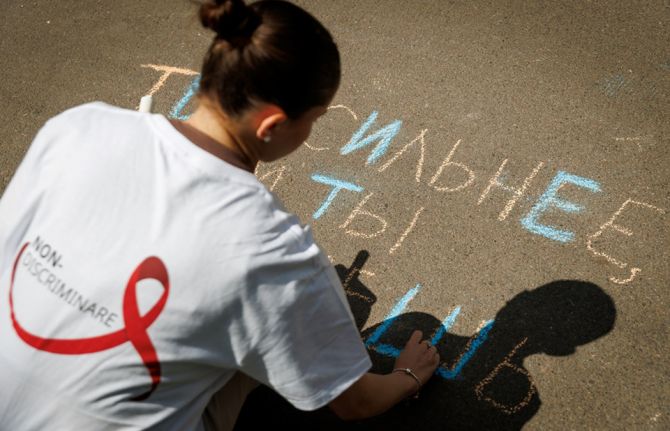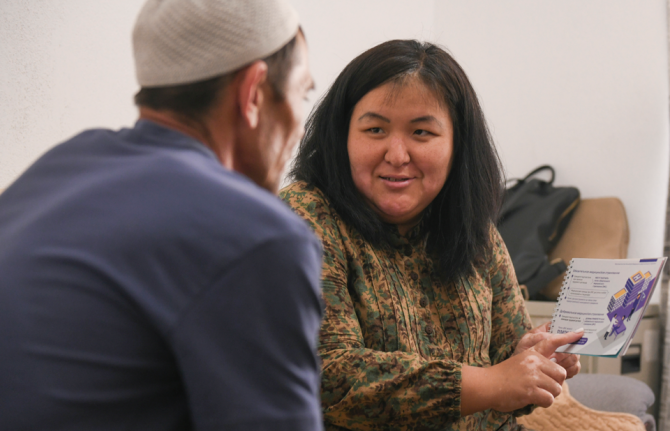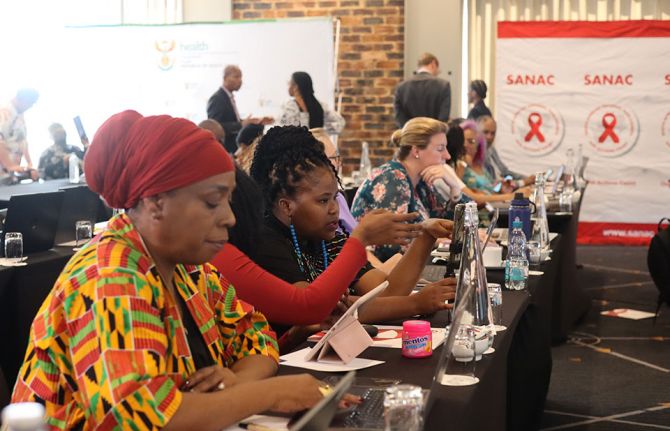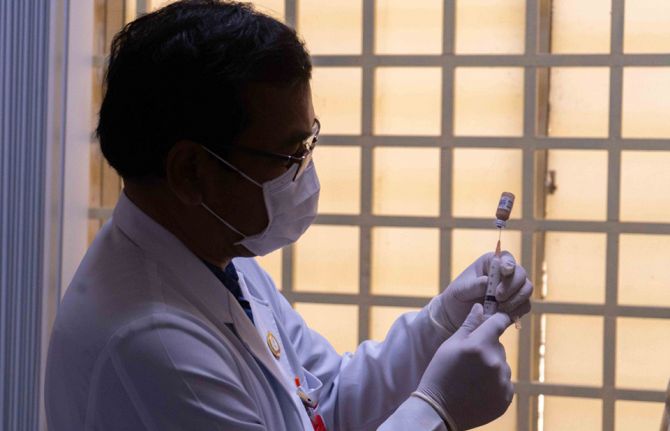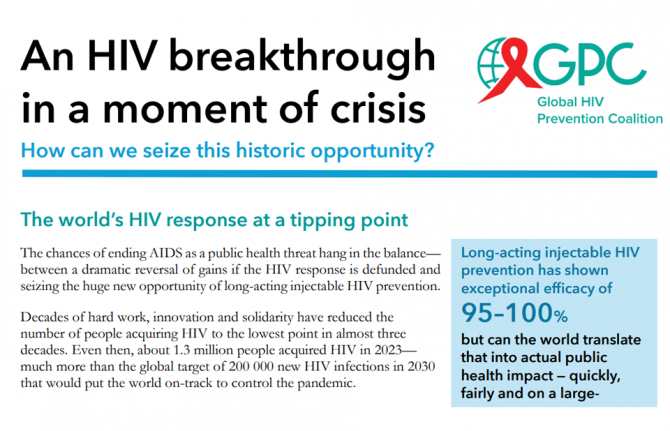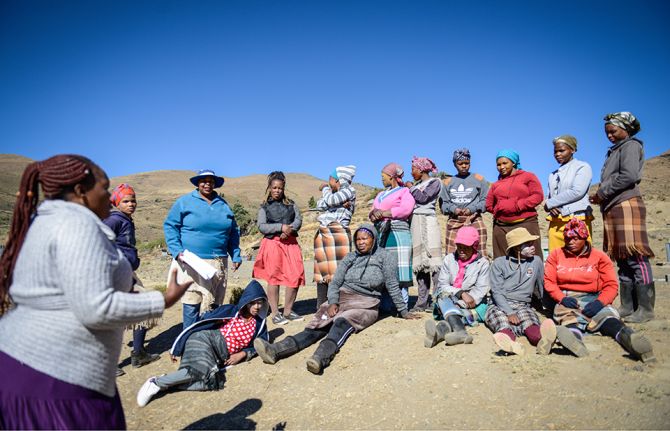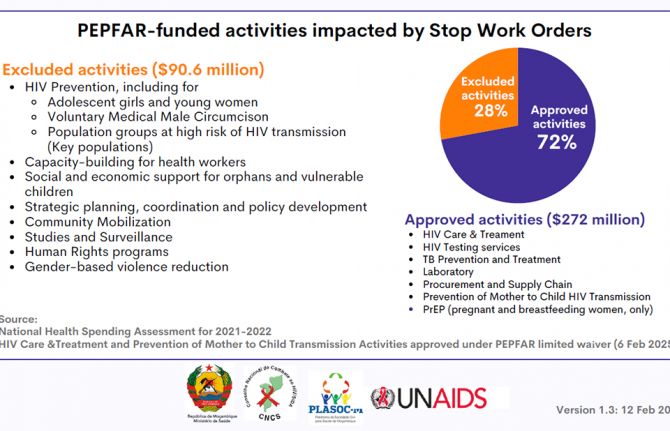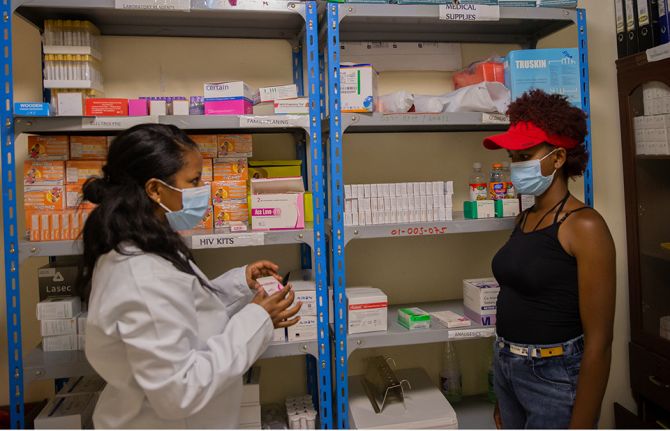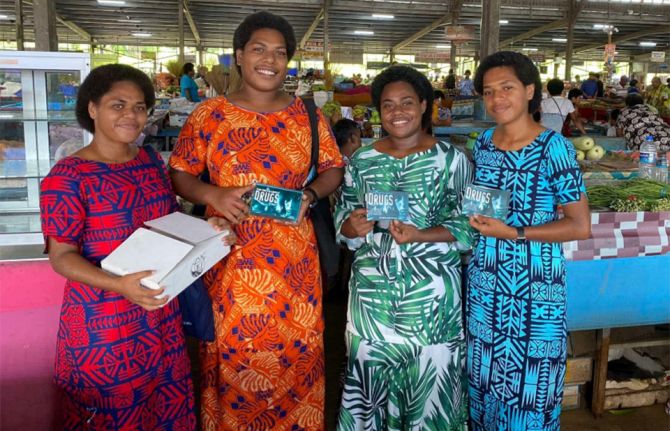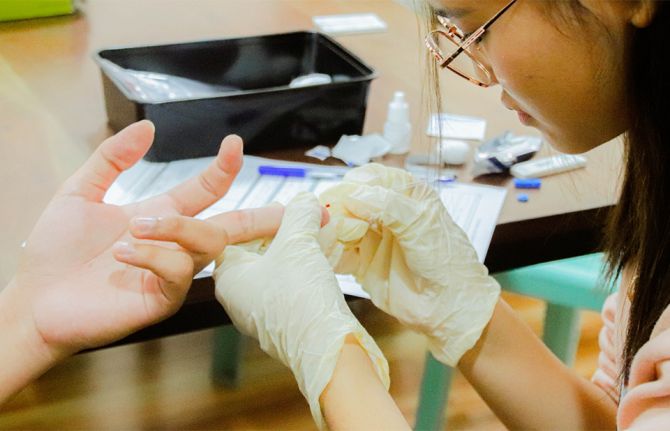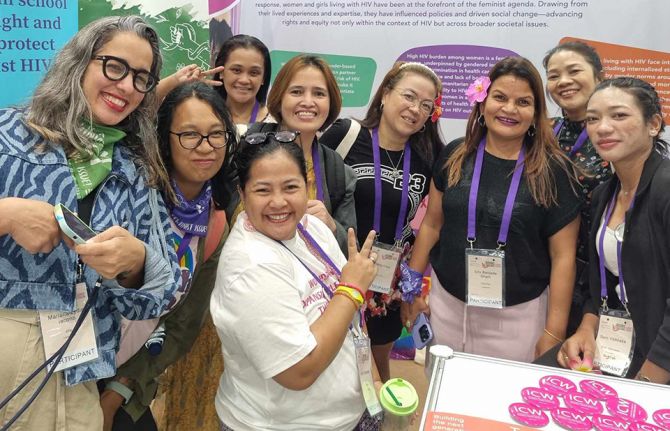
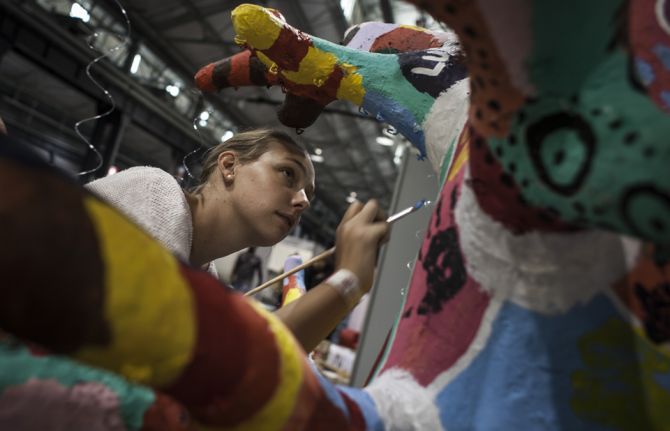
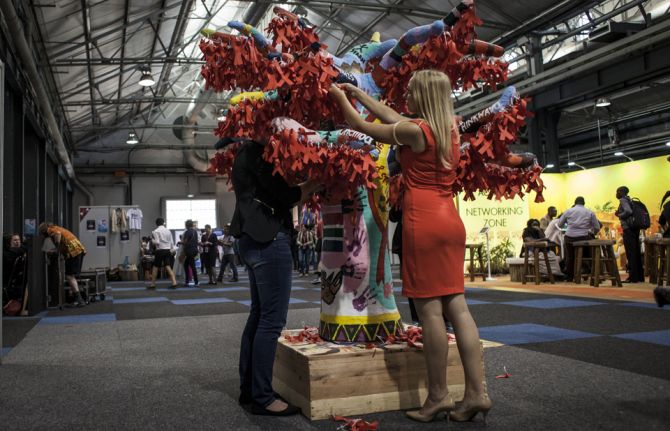

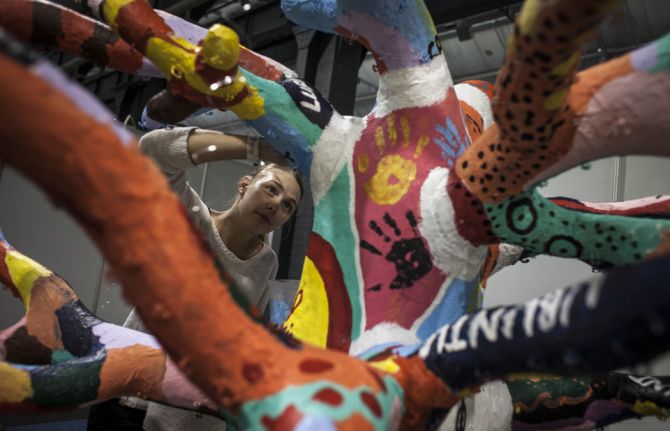

Feature Story
SolidariTree stems from solidarity
20 July 2016
20 July 2016 20 July 2016Red paper ribbons with inscriptions hang like leaves from a baobab-like papier mâché tree. Standing by her creation in the middle of the Global Village at the 21st International AIDS Conference, being held in Durban, South Africa, Michelle Vogelzang is beaming. Her AIDS SolidariTree has travelled far.
Made of the dense foam used to make surfboards, children in Lesotho covered the 11-part sculpture with paper, giving it a bark-like exterior. School students painted the tree in Pretoria, South Africa, writing words related to solidarity in the 11 official languages of both countries.
Unity, stop discrimination and ubuntu wind their way around the branches in multicoloured lettering.
“SolidariTree is a visual declaration designed by youth as a way for them to communicate on how to end HIV stigma and for everyone else to add their voice,” said Ms Vogelzang.
Originally from Durban, she now works in Lesotho. She said the idea of the interactive ribbon sculpture came to her because, in her opinion, HIV is not the killer, discrimination is.
“There is no way we should not be ending this epidemic because we have treatment and health-care facilities, but if you have stigma you are not going to get people tested, treated or even sharing their status,” she said as passers-by stared at the multiple ribbon leaves.
On opening day, the SolidariTree had 500 “leaves”—red ribbon messages from children who could not attend the conference.
Albertina Nyatsi took one of the red paper strips lying on a table. Without hesitating, she wrote something down quickly. The Durbanite stapled the strip, creating a ribbon, and pinned it on the sculpture.
“I was one of the first women in Swaziland to show what HIV looked like, so I wanted to make sure that I got my message across that we should not discriminate,” she said. “I am here because in 1997 I had tuberculosis and then I was tested for HIV and was found to be HIV-positive.”
The tree has grown and now has more than 4000 ribbons hanging from it. The project, entirely crowdfunded, cost around US$ 4000.
“Contributions came mostly from the United States of America and Canada,” Ms Vogelzang explained. In a way, all those people who supported the art exhibition are in South Africa with the tree,” she added. A true sign of solidarity.
Ms Vogelzang is hoping her tree will grow roots beyond the conference and will live on to inspire children, teenagers and adults alike.
Multimedia

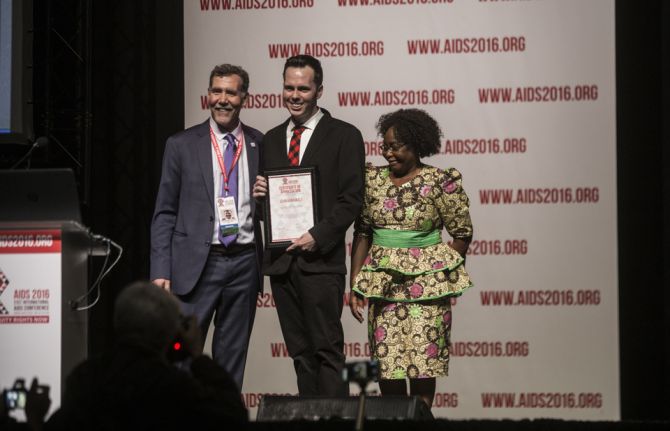
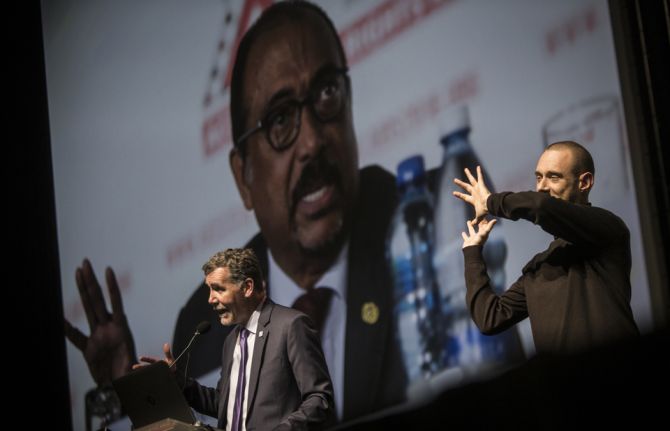
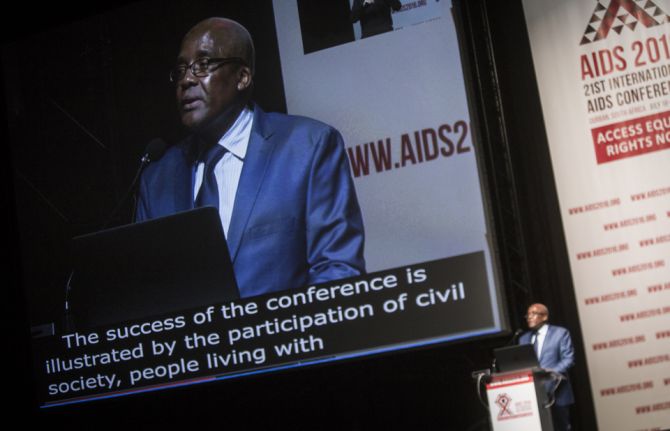
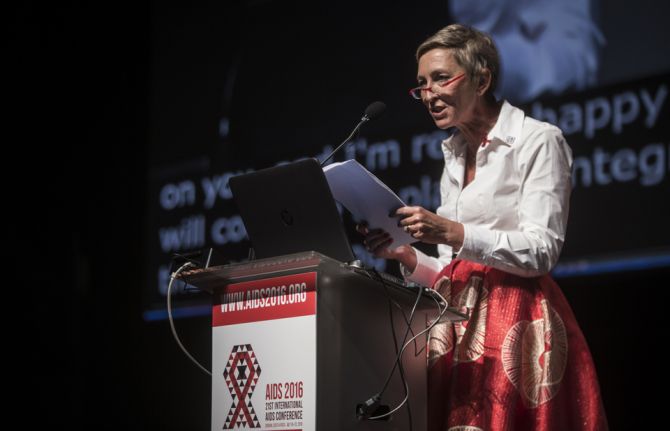
Update
The 2016 International AIDS Conference closes with a call to reject complacency in the AIDS response
25 July 2016
25 July 2016 25 July 2016While advances in HIV treatment science must be pursued with vigour, now is the time to urgently scale up quality HIV prevention programmes for people left behind by the AIDS response. This was one of the main messages of the 21st International AIDS Conference, which closed in Durban, South Africa, on 22 July 2016.
Throughout the conference, the prevailing sentiment was that much progress had been made since the AIDS 2000 conference, which was held for the first time on Africa soil in Durban fifteen years ago. “From Durban to Durban and beyond” resonated throughout the conference programme as a call to reject complacency and ensure that action is taken to pursue the Fast-Track targets in order to make Ending AIDS as a public health threat by 2030 a reality.
Nkosi Johnson, the 11-year-old boy who spoke powerfully during the opening ceremony of AIDS 2000 conference for the dignity and acceptance of all people living with HIV was at the forefront of delegates’ minds, who remembered his quiet bravery in the face of stigma and discrimination against people living with HIV, which still persists.
One of the main themes of the conference was the urgent action that is needed to reduce new HIV infections and AIDS deaths among adolescents, especially adolescent girls and young women in Africa, who remain disproportionately affected by HIV. Young people were encouraged to take a leading role in ensuring they are no longer left behind in policy or programmes. Key populations, especially sex workers, men who have sex with men and people who inject drugs, were also high on the agenda of both the scientific and community tracks of the conference, coupled with civil society activism on the sidelines of the conference to demand the recognition of their human rights.
The closing ceremony saw addresses being made by advocates in the global HIV response and outgoing and incoming Presidents of the International AIDS Society (IAS), Chris Beyer, and Linda-Gail Bekker respectively. Ms Bekker, a prominent South African HIV scientist, is the first women from African to lead the IAS.
At the end of the closing session, the conference was handed over to officials representing the organizing committee of the 22nd International AIDS Conference, which will be held in Amsterdam, the Netherlands, in 2018.
Quotes
“WE MUST SAY NO TO COMPLACENCY AT THIS MOMENT. THERE IS NO SPACE FOR IT. AIDS 2016 WILL HELP US AS INDIVIDUALS AND POLITICIANS TO FAST-TRACK THE ENDING OF THE AIDS EPIDEMIC AS A PUBLIC HEALTH THREAT BY 2030.”
"IN THE NAME OF HUMANITY, I ASK EACH ONE OF US TO RECOMMIT TO ADVOCATE, ACT AND COMMIT TO MAKE THE BIGGEST DIFFERENCE WE CAN IN OUR DAILY WORK.”
“I CHALLENGE ALL OF US TO FIGHT FOR THE RIGHTS OF PEOPLE PUSHED TO THE MARGINS OF SOCIETY TO ENSURE THAT ALL PEOPLE LIVING WITH HIV ARE ABLE TO Live HEALTHY, DIGNIFIED AND FULFILLED LIVES.”


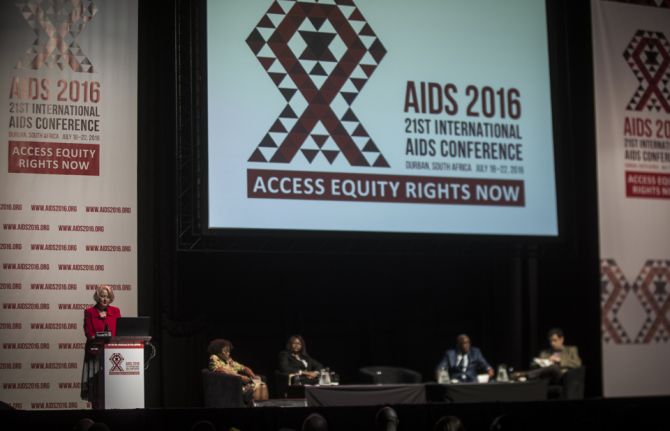
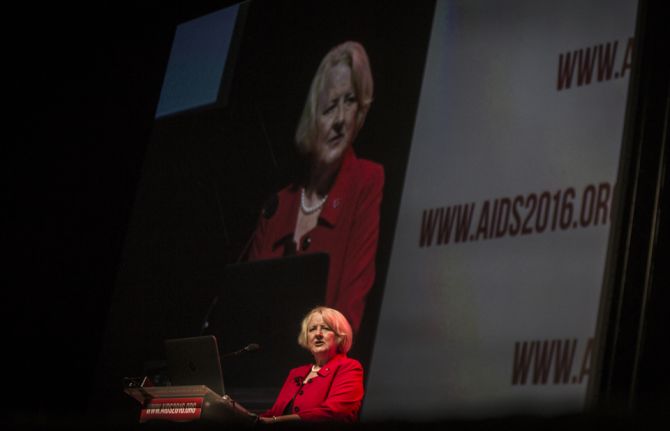
Update
Implementation of the 2016 Political Declaration on Ending AIDS discussed at International AIDS Conference
22 July 2016
22 July 2016 22 July 2016In June 2016, United Nations Member States committed to implementing a bold agenda to end the AIDS epidemic by 2030 during the United Nations General Assembly High-Level Meeting on Ending AIDS. The progressive, new and actionable Political Declaration includes a set of specific, time-bound targets and actions that must be achieved by 2020 to get on the Fast-Track and end the AIDS epidemic by 2030 within the framework of the Sustainable Development Goals.
During the 21st International AIDS Conference, taking place in Durban, South Africa, participants at a session entitled “From commitments to actions: implications of the 2016 United Nations High-Level Meeting on Ending AIDS,” discussed the implications of the Political Declaration, with a focus on implementation and accountability. The need to Fast-Track the AIDS response by breaking the silos and engaging with all sectors and coalitions in a whole-of-government approach in order to achieve the goals and targets of the Political Declaration and the Sustainable Development Goals was highlighted. The participants reiterated the call for a fully funded AIDS response that was made throughout the conference, including full funding for the Global Fund to Fight AIDS, Tuberculosis and Malaria.
The participants included UNAIDS Deputy Executive Director Jan Beagle, South Africa’s Minister of Health, Aaron Motsoaledi, and Javier Hourcade Bellocq, of the International HIV/AIDS Alliance. They reflected on the importance of translating the Political Declaration’s global targets into goals based on regional specificities, following a population and location approach. The session was co-chaired by Mwaba P. Kasese-Bota, Permanent Representative of Zambia to the United Nations, and Olive Shisana, Co-Chair of the 21st International AIDS Conference and former Chief Executive Officer of the South African Human Sciences Research Council.
Quotes
“Unless we achieve with HIV, we will not achieve the Sustainable Development Goals.”
"We are at a turning point in the AIDS response. We have the mandate, we have the strategy, we have the tools and commitment to the targets. Now together we must translate them into action.”
"Political processes will not give us all what we need, but we must continue to be involved."

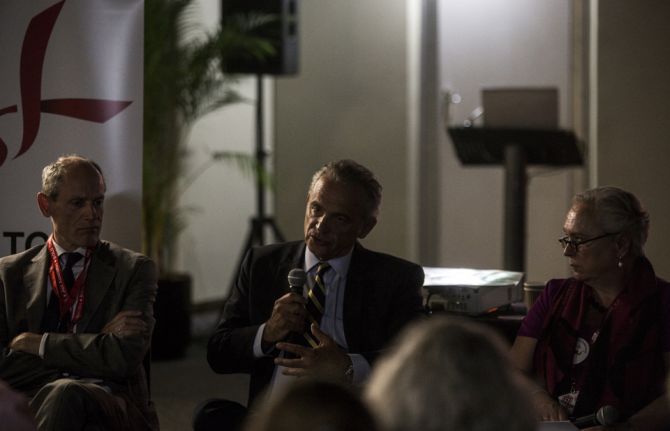
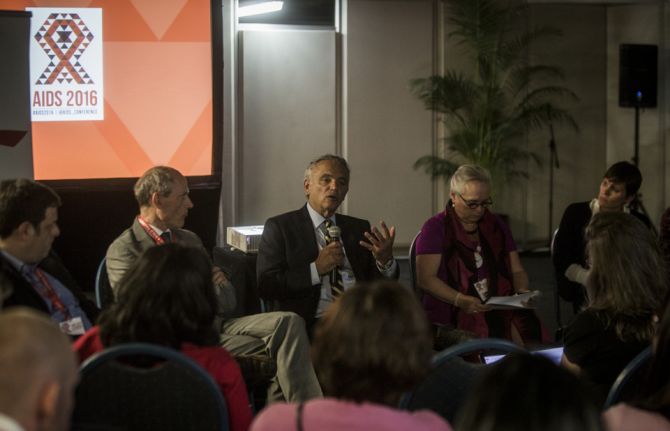
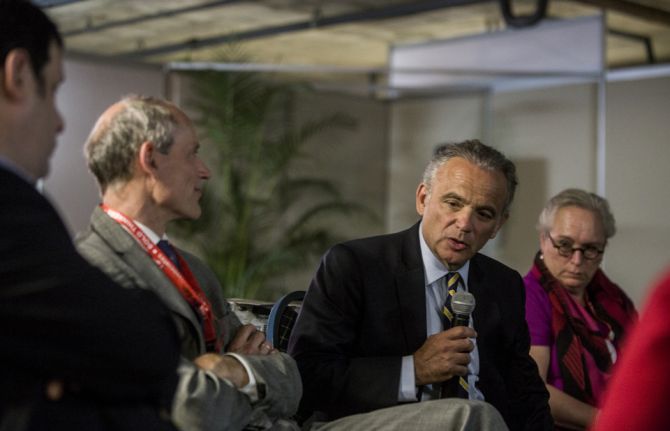
Update
Lessons learned from the United Nations General Assembly High-Level Meeting on Ending AIDS
21 July 2016
21 July 2016 21 July 2016A panel of seven speakers discussed the United Nations General Assembly High-Level Meeting on Ending AIDS, which was held in New York, United States of America, from 8 to 10 June. Entitled “Bottom-up and top-down: from national to global policy work and back,” the discussion was held on 20 July at the 21st International AIDS Conference, being held in Durban, South Africa.
Javier Belloqc, who as Co-Chair of the High-Level Meeting AIDS Stakeholder Task Force, noted that the Civil Society Hearing and the zero draft of the Political Declaration on Ending AIDS were part of the “honeymoon period” of the process. Community representatives spoke effectively on a range of priorities at the Civil Society Hearing and ensured that the zero draft included strong language on human rights, key populations and other issues. However, some of this language was lost and he found the process of developing the Political Declaration less and less transparent.
Lambert Grijns, an ambassador from the Netherlands, pointed out many of the positive aspects of the Political Declaration, including language on human rights, eradicating stigma, harm reduction and gender-based violence and the first use of the word “transgender” in a United Nations declaration. However, he identified several areas that fell short, including on key populations and comprehensive sexuality education.
Luiz Loures, Deputy Executive Director of UNAIDS, said he was pleased with the very bold Political Declaration targets on prevention and treatment, including treatment access for children, and on new technologies such as pre-exposure prophylaxis, but was disappointed by the absence of key populations being explicitly a part of the Political Declaration.
Louise van Deth of Stop AIDS Now! asked how civil society can influence United Nations diplomats in New York. Nadia Isler, Counsellor, Permanent Mission of Switzerland to the United Nations, noted that there is no recipe for influencing decision-makers, in part because the world is constantly changing.
Alessandra Nilo of Gestos noted that the High-Level Meeting on Ending AIDS happened because civil society demanded that it happen and that the recognition of transgender people was groundbreaking. She added that the next step would be to translate the Political Declaration into progress in countries and to work at the national level.
Quotes
“Not making key populations more explicitly part of the Political Declaration on Ending AIDS, with clear service targets for them, does not represent the epidemic we have today.”


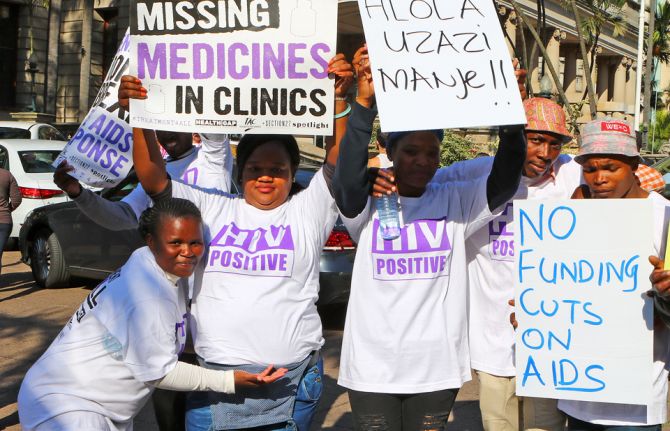
Update
The collapse of global AIDS funding
21 July 2016
21 July 2016 21 July 2016In order to reach the Fast-Track Targets there is an immediate need to increase and front-load resources for the AIDS response. If the world can't find these investments, AIDS will not be ended as a public health threat by 2030.
That was the conclusion of an event entitled “The collapse of global AIDS funding,” which took place on 19 July at the 21st International AIDS Conference, being held in Durban, South Africa.
The participants stressed that financing the AIDS response needs to follow the principles of shared responsibility and global solidarity, yet the HIV donor countries’ disbursements decreased by 13% in 2015 compared to 2014 levels.
Thirteen out of 14 governments assessed decreased their contributions through bilateral and multilateral channels. This decrease can be partially explained by an appreciation of the United States dollar, but 12 out of the 14 governments decreased their contributions in their original currencies.
The Government of the United States of America is the biggest international funder of the AIDS response. It provided 66% of international resources in 2015; however, it was noted during the meeting that there is no expectation for increased investments in the future.
Fifty-seven per cent of the US$ 19 billion available for low- and middle-income countries comes from domestic sources. The participants noted that the insufficiency of resources available for HIV is acute because of inefficient allocations, ineffective programmes and corruption.
The participants concluded that there is no single action, such as price reductions, taxation, efficiency gains or increased donor contributions, that can fill the gap individually—there needs to be a combination of measures.
Quotes
“The world military spending is US$ 1.75 trillion annually. A small part of it can finance the end of AIDS.”
“New HIV infections among adults are not going down. Prevention and treatment programmes need to continue to be scaled up. In order to make significant progress, the investments to reach the end of AIDS as a global public health threat by 2030 need to be increased and front-loaded during the next four years or we will drown with increasing costs.”
“Is there currently enough money to end AIDS? No. Are there any interventions to solve the problem? There are no individual solutions available, but there’s a need for a combination of measures, including decreasing the costs and increasing the revenues.”
“Flat funding is a reality. Efficiency gains only buy time before we bump against the wall. It is time to change the business case.”

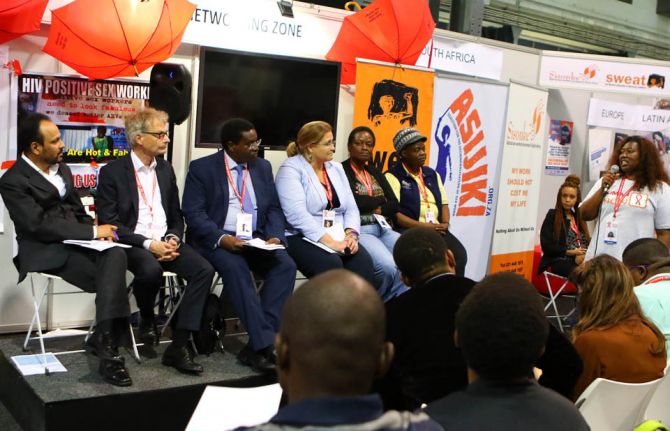
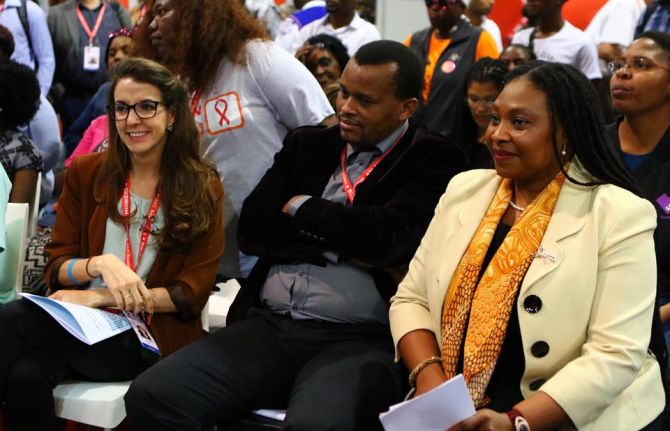
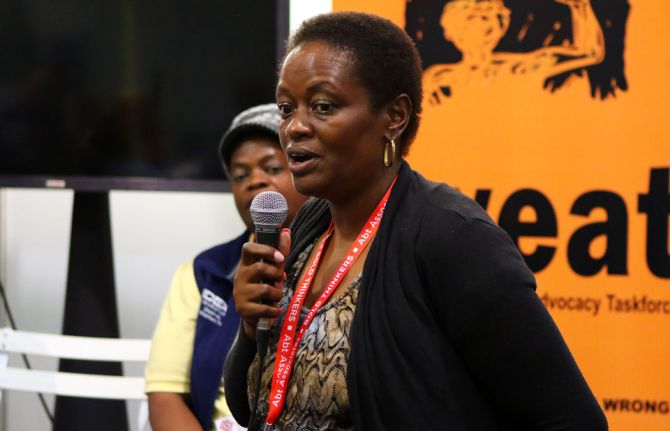
Update
HPV, HIV and cervical cancer: leveraging synergies to save women’s lives
22 July 2016
22 July 2016 22 July 2016On 20 July, at the 21st International AIDS Conference, being held in Durban, South Africa, UNAIDS, the World Health Organization (WHO) and the Global Coalition on Women and AIDS launched a joint report, entitled HPV, HIV and cervical cancer: leveraging synergies to save women’s lives, as part of the work of the United Nations Interagency Joint Task Force on Noncommunicable Diseases. The report was launched during an informal panel discussion with representatives of UNAIDS, WHO and the International Community of Women Living with HIV, East and Southern Africa, moderated by Ebony Johnson of the Athena Network.
The burden that HIV places on women, particularly adolescent girls and young women from low- and middle-income countries, is compounded by the global burden of human papillomavirus (HPV) infection and cervical cancer. Every year more than 260 000 women die from cervical cancer—approximately 85% of whom live in low- and middle-income countries. Women living with HIV have a four to five times higher risk of developing cervical cancer, an AIDS-defining illness that is the second most common cancer among women living in low- and middle-income countries.
HPV is a major contributor to global morbidity and mortality each year, causing diseases that range from benign lesions to invasive cancers. Growing evidence indicates that HPV may also be an important cofactor in HIV acquisition.
Given the association between HPV, cervical cancer and HIV, synergies must be leveraged, and a focused and integrated approach to sexual and reproductive health, and saving women’s lives, must be taken.
The launch of the report engaged advocates, activists, researchers, service providers, the United Nations and development partners in a lively and informal dialogue. Princess Tessy of Luxembourg, Yvonne Chaka Chaka and Prince Africa Zulu of Onkweni attended the event.
Quotes
“Young women and girls must have holistic health services and heath information that covers all their health needs, including sexual and reproductive health and rights. One good way to deliver this information and these services is to ensure that all girls have access to free secondary education and that schools deliver quality health programmes that include HPV, HIV and sexual health services.”
“All women need to have simplified information on HPV and cervical cancer to understand the link to HIV. Information and access to integrated services will help prevent these AIDS-related illnesses among women and girls”.
“Cervical cancer is the most preventable and curable of the many types of cancer if we apply our knowledge about prevention and early detection. However, we are observing a tremendous gap in vital services in low- and-middle income countries, with the consequence of high morbidity and mortality from cervical cancer .We need to pull down the traditional silos of communicable versus noncommunicable diseases and develop synergies to save the lives of women.”
“As a mother of four boys and for all girls in South Africa, I am concerned about the sexual and reproductive health of young people. We know that cervical cancer kills, but it is preventable. We need to reach everyone and ensure that young people are at the table of decision-making, because each one has a role to play.”
Related

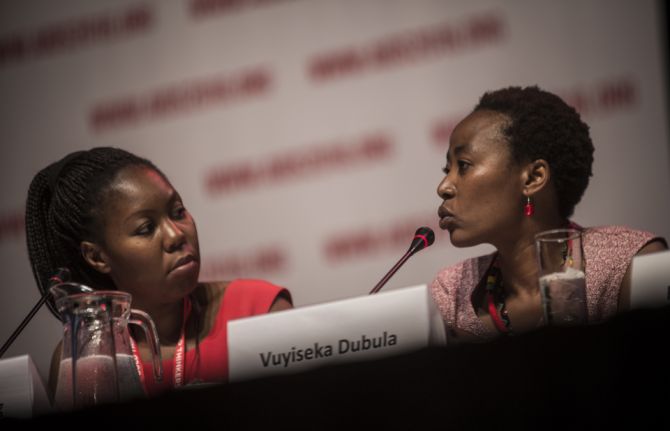
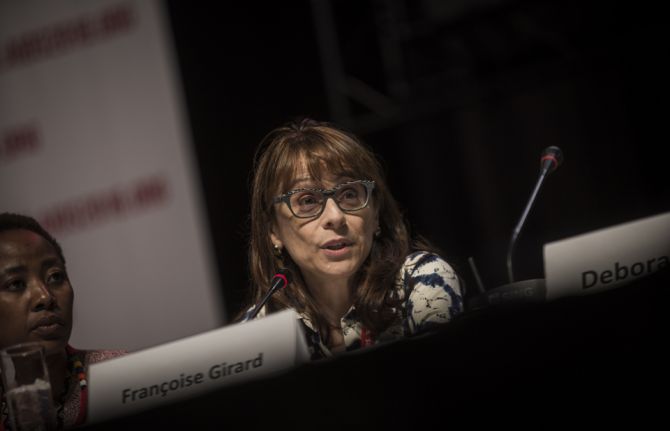

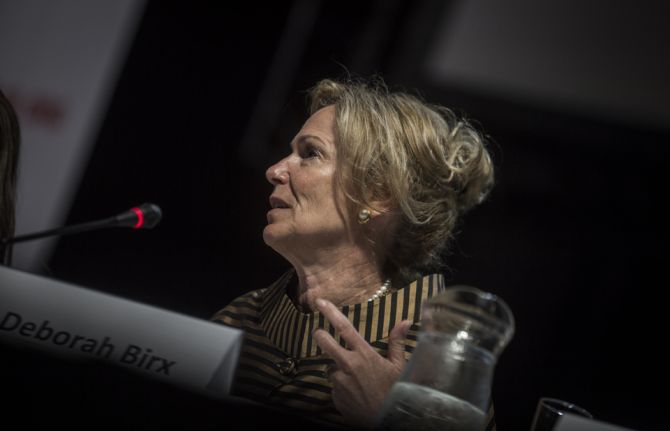
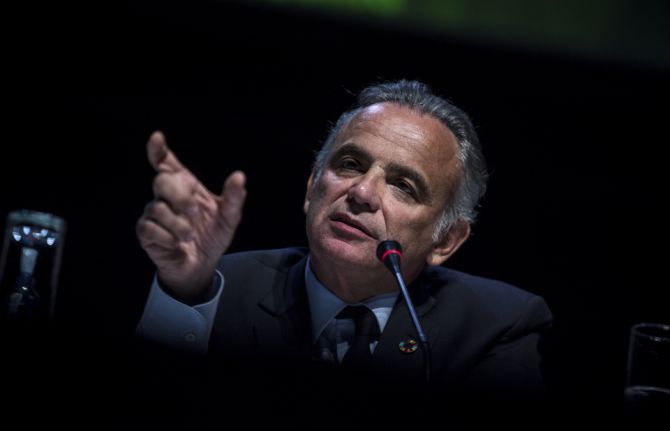
Update
Turning the tide for adolescent girls and young women
19 July 2016
19 July 2016 19 July 2016At a session on 19 July entitled “Turning the tide for adolescent girls and young women: gender equality and women’s human rights at the centre for reaching the end of AIDS,” at the 21st International AIDS Conference, being held in Durban, South Africa, new research evidence from the Centre for the AIDS Programme of Research in South Africa (CAPRISA) was presented.
The research results suggest further reasons for the increased risk of HIV infection among adolescent girls and young women in Africa and how it could be reduced. Women who have vaginal Prevotella bivia infection are 19 times more likely to have evidence of genital inflammation and 13 times more likely to acquire HIV.
Another study suggested that the impact of pre-exposure prophylaxis (PrEP) may vary according to the level of acidity of the vagina. Gardnerella vaginalis, a bacteria that predominates when normal vaginal lactobacillus levels are low, absorbs the PrEP medicine tenofovir, thereby reducing its availability to prevent HIV infection. This will have implications for the effectiveness of PrEP if the results of this laboratory study are confirmed in women at risk of HIV.
Finally, another study conducted by CAPRISA in South Africa confirmed that age-disparate relationships are common, with adolescent girls and young women having sexual relationships with men who were, on average, eight years older.
Following the CAPRISA presentation, a panel discussion took place to discuss what it would take to turn the tide for young women and adolescent girls. Participants noted that reaching the global target set in the Political Declaration on Ending AIDS—namely, reducing annual new HIV infections among young women and adolescent girls to fewer than 100 000 by 2020—would require accelerated scale-up of combination HIV prevention programmes for adolescent girls and young women covering biological, behavioural and structural programmes tailored to the needs of the location and population.
Keeping girls in school, community mobilization, multimedia, cash transfers, youth leadership and prevention of gender-based violence were seen to be as essential as condom programming, comprehensive sexuality education, PrEP and antiretroviral therapy.
Also at the session, UNAIDS Deputy Executive Director Luiz Loures launched new guidance on HIV prevention among adolescent girls and young women that details a combination of approaches that also reach out to men and adolescent boys.
Quotes
“Reaching the 2016 United Nations Political Declaration on Ending AIDS targets on adolescent girls and young women entails developing effective HIV prevention programmes with a combination of approaches that also reach out to men and adolescent boys. The new UNAIDS guidance launched today will help countries to do so.”
“Biomedical interventions can be important as one piece of the puzzle, but we know that girls going to clinics get driven out and shamed because they are sexually active. Until we bring girls to clinics, make clinics more youth-friendly, stop stigmatizing girls and involve government and communities systematically in these efforts, we will not have the results we need.”
“To achieve our goal for women and girls, we need political and community leadership to ensure that comprehensive sexuality education is implemented. We need to get empowered young women who are valued by the community.”
“In South Africa, HIV cannot be separated from gender-based violence. We need to broaden our approach because the HIV epidemic among women and girls is not only about sex, it is about relationships, poverty and other structural issues.”
“Gender inequality is not a medical issue. We will not end AIDS if we don’t end gender inequality. We need an equal world.”


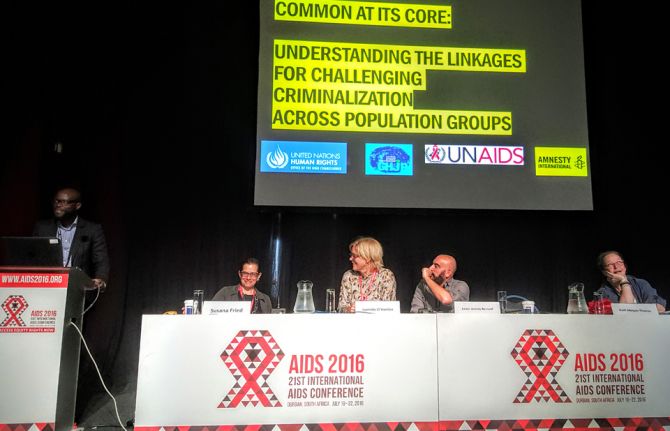
Update
Populations affected by unjust criminal laws call to advance justice and health
21 July 2016
21 July 2016 21 July 2016On 19 July, a workshop was hosted at the 21st International AIDS Conference, being held in Durban, South Africa. Entitled “Common at its core: understanding the linkages for challenging the impact of criminal law across population groups,” the workshop highlighted the common root causes of the misuse of criminal law against people living with HIV, sex workers and lesbian, gay, bisexual, transgender and intersex people, as well as in the context of abortion.
The discussions noted that unjust criminal laws against those populations are due to prejudice, gender inequality and discrimination. The participants stressed that punitive laws against key populations lead to serious human rights violations, exacerbate vulnerabilities to HIV and other health issues and affect efforts to end AIDS.
To address unjust laws, the participants called for building synergies among populations affected by them. This will allow experience-sharing on successful approaches in addressing criminalization and will enable the development of joint strategies. Examples of collaborations between communities to address their common health and human rights challenges were highlighted.
The discussions were concluded with a call for more collaboration in addressing the criminal law and its impact on specific populations, including in the context of HIV. This should build on efforts to expand strategic litigation and the engagement of lawmakers, the police and the judiciary to end injustice and advance health for all.
The event was organized by UNAIDS, the Office of the United Nations High Commissioner for Human Rights, Amnesty International and the Global Health Justice Partnership at Yale University.
Quotes
“Criminalization of sex work sends the message that sex workers are not seen as fit and worthy to enjoy rights. Sex workers experience serious forms of violence and abuse, often committed by police and law enforcement agents. These abusive laws and practices violate human rights obligations.”
“Restrictive legal regimes on abortions, including criminalization, do not reduce abortion rates but rather make them unsafe. These restrictions are rooted in societal norms that deny women’s agency and capacity to make decisions about their own lives.”
"At its core, criminalization of specific populations, including lesbian, gay, bisexual and transgender people, is based on prejudice, fear and stigma. Criminal laws against our populations are ambiguous, unjust and used mainly as political and social tools to enforce heteronormative and patriarchal norms. We must join hand and build synergies among our communities and solidarity with other social justice movements to challenge these laws.”
"The breakthrough at this conference is the shift towards intersectionality in our efforts to end the punitive and abusive laws against various populations. This emerging movement should be supported and strengthened as critical to advancing effective responses for dignity, health and justice for key populations.”
Related

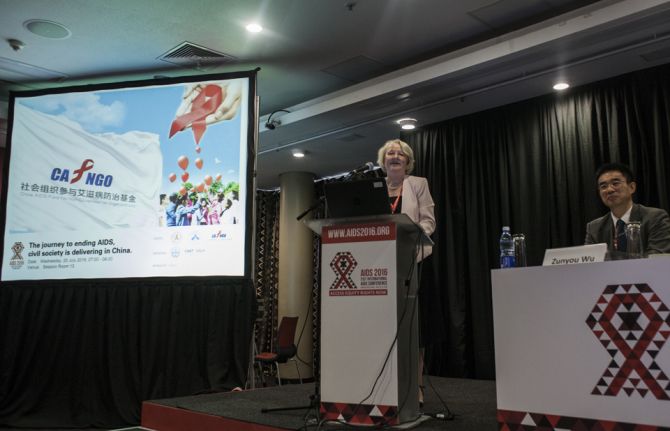

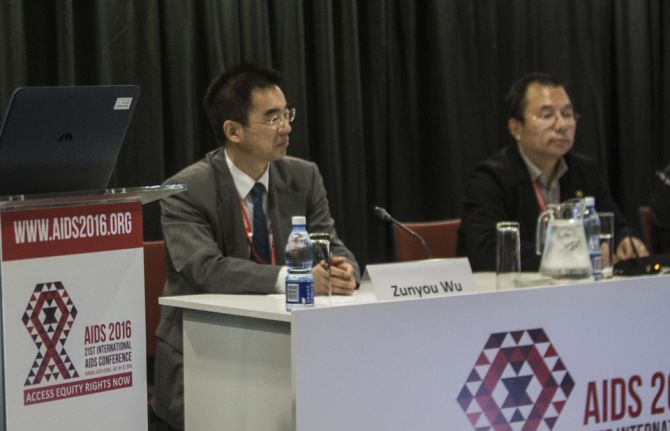
Update
Civil society helps drive tailored responses to end AIDS in China
21 July 2016
21 July 2016 21 July 2016In recent years, the AIDS response in China has seen increasing civil society involvement in focused, community-based HIV prevention and treatment programming, which has contributed to maintaining low levels of HIV prevalence in the country and ensuring an increasingly evidence-informed, tailored response.
The strategies, progress and achievements of Chinese civil society organizations were the focus of a session at the 21st International AIDS Conference, taking place in Durban, South Africa, which brought together representatives of the Government of China, Chinese civil society, the World Health Organization and UNAIDS.
The session, held on July 20, showcased the China State Council approved Fund for Participation of Civil Society Organizations in AIDS Prevention and Care, which has invested 50 million renminbi (nearly US$ 7.5 million) to support the work of nongovernmental organizations in education, communication, testing, counselling, care and support, including with key populations.
Although overall HIV prevalence continues to be low, the absolute number of people living with HIV and the annual number of new HIV infections remain significant, particularly among key populations. Recognizing that social and community organizations that have the trust of key populations are best able to reach at-risk communities, the fund—which has been designed, established and implemented in partnership with UNAIDS—is playing an important role in increasing prevention and treatment programmes for key populations in China.
Opening the session in Durban, UNAIDS Executive Director Jan Beagle underlined how China has undertaken impressive efforts to analyse its epidemic and tailor its response. Recalling the visit of a delegation from the UNAIDS Programme Coordinating Board (PCB) to China in May 2016 to explore the national response and the role of communities, Ms Beagle noted how the PCB delegation had seen first-hand that cost-effective and rights-based approaches that focus on populations and locations were proving to have impact.
Quotes
“The spirit of partnership and entrepreneurship, particularly with key populations, has helped to prevent new HIV infections and to raise awareness among higher risk groups. Sharing these experiences is essential to Fast-Track the AIDS response in China.”
Region/country

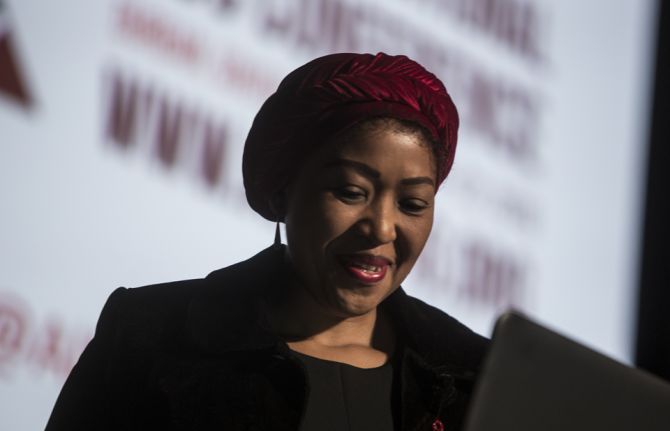
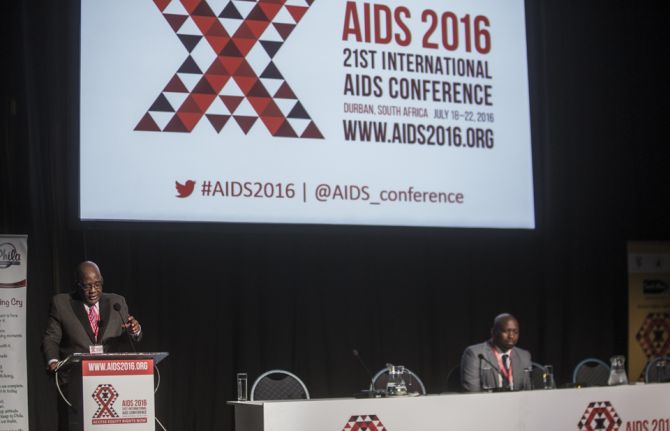
Update
South Africa launches SheConquers prevention campaign for increased focus on young women and adolescent girls
20 July 2016
20 July 2016 20 July 2016Responding to the heightened vulnerability of young women and adolescent girls to HIV, the Government of South Africa has launched a nationwide HIV prevention campaign. Entitled SheConquers, the three-year, multimillion rand campaign was launched at a session hosted by the South African Ministry of Health during the 21st International AIDS Conference, taking place in Durban, South Africa.
Across sub-Saharan Africa, HIV is a leading cause of deaths among adolescents aged 10–19, and two thirds of all new HIV infections among adolescents occur among adolescent girls. Only a quarter of girls and a third of boys are estimated to have full understanding of how HIV is transmitted and can be prevented.
In what was a lively session held on 20 July, filled with performance, song and dance, the UNAIDS Deputy Executive Director Jan Beagle, representatives of key partners in South Africa’s AIDS response, including the United States President’s Emergency Plan for AIDS Relief, and a multitude of young women and girls engaged in the national AIDS response came together to celebrate and advocate for South Africa’s increased focus on HIV prevention for young women and adolescent girls. The session included presentations and demonstrations of innovative prevention strategies to ensure tailored in-school and out-of-school programmes for young women and adolescent girls, including for HIV testing, condom distribution, sexual and reproductive health and sexually transmitted infection management.
SheConquers is built around a five-point strategy that aims to decrease new HIV infections, teenage pregnancies and gender-based violence among young women and adolescent girls, and to increase and retain young women and adolescent girls in school and increase economic opportunities for young people, particularly young women.
Speaking at the session, Ms Beagle underlined that the particular vulnerabilities faced by young women and adolescent girls require the comprehensive response promoted through SheConquers to addresses social contexts, to look at determinants that define the epidemic and to put empowering information and tools in the hands of young people. The Sustainable Development Goals and the 2016 United Nations Political Declaration on Ending AIDS, which promote women’s leadership and empowerment and integrated approaches to sexual and reproductive health and address violence and discrimination against women and girls, provide a key opportunity to ensure that girls and women are empowered with the means and autonomy to make life-defining choices, including with respect to their own health.
Quotes
“We invite the world to actively engage to save our girls. Saving girls is not a future event, but a present reality.”
“It is truly wonderful to hear the passion, energy, determination, commitment and action through the voices of empowered young women and adolescent girls. They know what they need. SheConquers is a solid strategy matched with solid financing, providing the tools to translate words into action.”
“Our biggest value is in our connections—helping and holding each other.”

